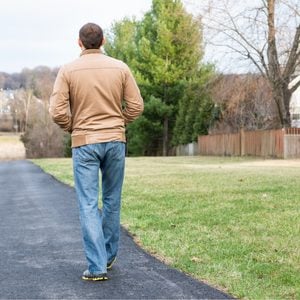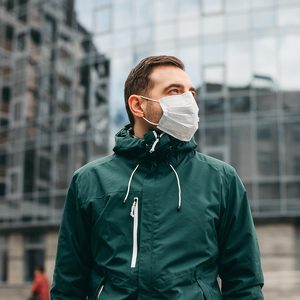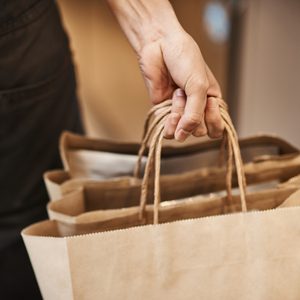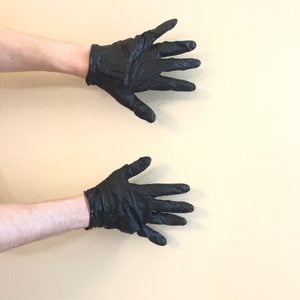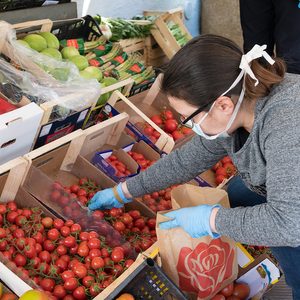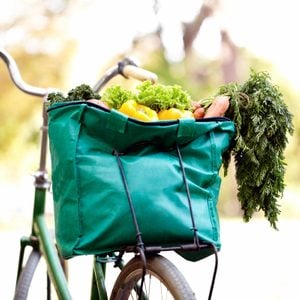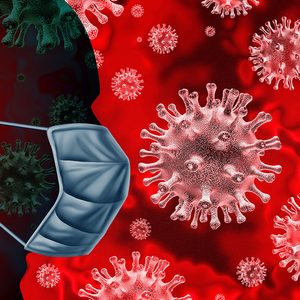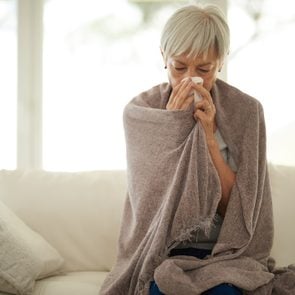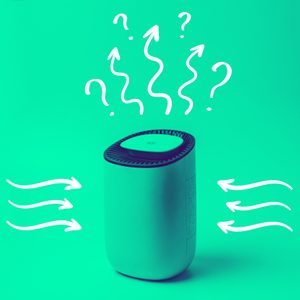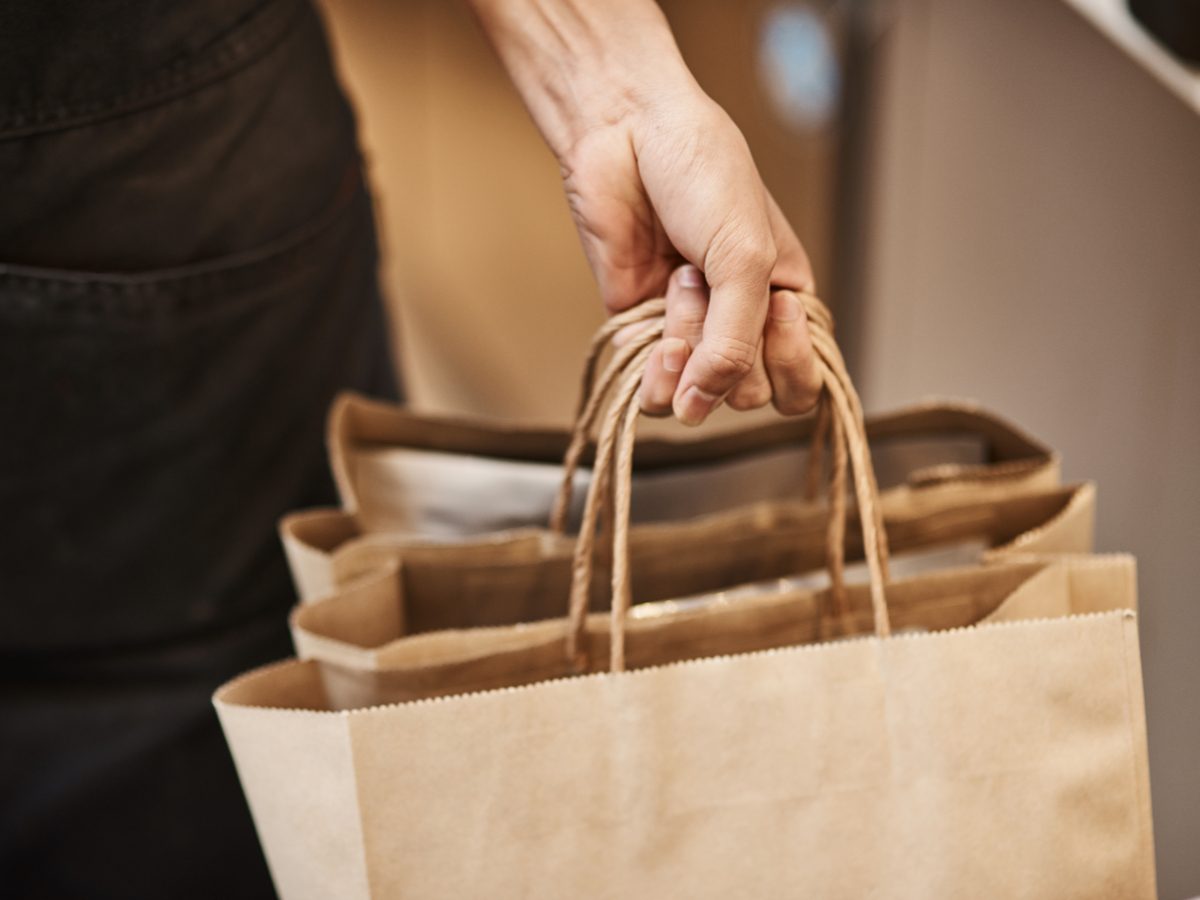
Ask An Expert: How Safe Am I from the Coronavirus When Ordering Delivery?
Reader’s Digest Canada: How safe is it to have food delivered to my home right now?
Germ expert Jason Tetro: Pretty safe. Let’s start with the packaging. Most of the time, the person who is delivering the food has put it into a separate container and they take it out of that container to provide it to you. So the only risk from the delivery person is really in that few seconds that they’re taking it out of the bag and putting it into your hands or onto your porch.
At the place where the preparation is occurring, someone in the kitchen could happen to cough or sneeze onto the packaging. If it’s cardboard, you don’t have to worry about it—the virus will go into the cardboard and it’s very difficult to get it out of there and onto yourself. If your food is in Styrofoam or plastic, you can just give it a wipe down with a bit of soap and water. Or, take the food out of the container, put it into a dish you trust and throw away the container.
But what about the food itself?
The virus will die at about 65 C. So when the food is cooked, the virus is killed.
And if someone happens to have coughed on the food when it came out of the oven?
The virus will die soon after it hits the heat.
What if I ordered a salad, or something else prepared without heat?
When you’re talking about something that isn’t cooked, the worry isn’t just coronavirus—but also other foodborne pathogens like salmonella or listeria. If you’re purchasing non-cooked items, you want to know that it was stored properly, washed and that the person preparing it had clean hands. Thankfully, though, the amount of the coronavirus you’d be exposed to when eating is very low.
But is it dangerous to eat the virus, as well as breathe it in?
No, it’s not the same. If you chew the food really well, that’ll ensure it goes down your intestinal tract and not your respiratory tract. There, if it does affect you, it’ll just be like if you ate something bad and got food poisoning.
Next, we ask: should I be disinfecting my groceries during COVID-19?
Jason Tetro is host of the Super Awesome Science Show podcast, and author of The Germ Files.
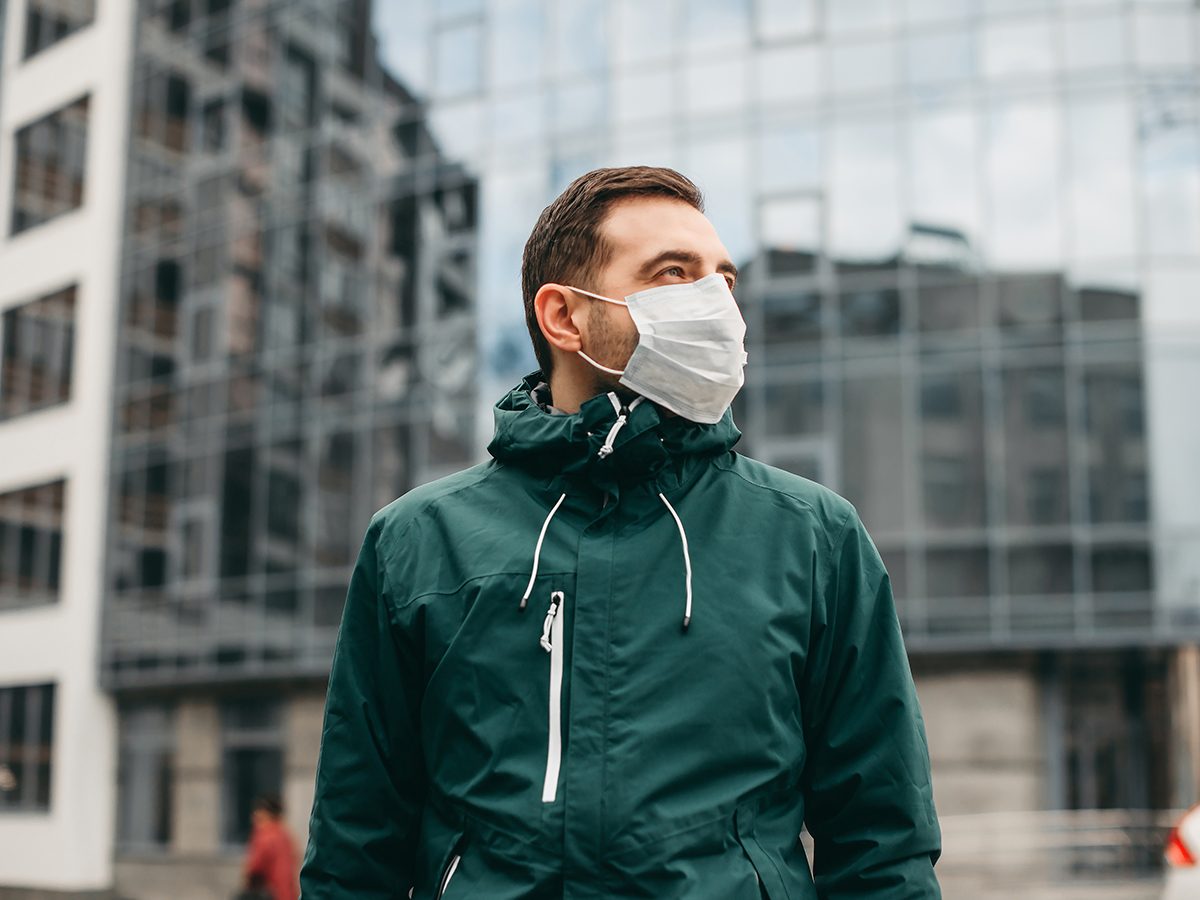
Ask An Expert: Can I Catch Coronavirus From My Clothes?
Reader’s Digest Canada: When I get back from a walk or run, I know I’m supposed to wash my hands. But what about my clothes? Could they have the virus on them?
Germ expert Jason Tetro: Even before the coronavirus outbreak, I’ve recommended it’s good hygiene to have outside clothes and inside clothes. When you come home, especially if you’ve been on transit, do you really want to traipse all the stuff that you picked up outside into your home? No. But especially now, if you’re afraid the virus might be on your clothes, put them in the washing machine or set them aside and don’t touch them for a few days. If you’re using a DIY face mask, wash it with hot water that’s at least 65 C—the temperature at which the virus is killed.
When the virus gets onto any kind of surface, whether it be a fabric or a hard, non-porous surface, it will survive for a certain amount of time. Normally, in the first two hours, it will dry out and you’ll have an exponential decrease in the viral load (the number of viruses that are infective). After that, it decreases until, 72 hours later, in the majority of cases, you won’t have any virus.
Health officials have encouraged people to avoid sitting on a park benches. I’m curious, though: would that really put me at risk?
That has been debated. Dr. Vera Etches, Ottawa’s Medical Officer of Health, had said that a park bench could possibly be contaminated with the virus. And it’s true that on hard surfaces—including the metal on playground structures—the virus can just hang out there.
However, I would say it’s a good likelihood that if you’re outside, and it’s sunny, the virus is probably not going to survive. It’ll dry out, or else humidity will disrupt its lipid envelope. Also, UV light modifies the genetic material of the virus so that it’s no longer dangerous; five minutes under strong UV light and about half an hour under low UV light will kill it.
I hadn’t heard that about humidity. Should I be keeping my home humid?
Yes, in general that’s a good idea. The majority of respiratory infections, especially viruses, do better when it’s dry—not only in terms of their survival, but in terms of their ability to get inside of you. Our mucus layers act as a barrier, and if you’re all dried up, the virus has a better chance of getting into the cracks and down into your cells.
What about my dog? Can he be a carrier, or bring the virus to me on his fur?
The research so far has shown that dogs and cats cannot transmit this coronavirus to humans—so you can still have your doggie and kitty kisses and not be worried.
As for a pet bringing the virus home on their fur, in order for that to happen, an infective dose would first have to land on your dog. After that, you somehow have to put your face in that same area of the fur within half an hour—before the virus dries out—and breathe that in.
Phew, okay. And what about seeing my family—is it okay to stand in a front yard, two metres apart, and have a visit?
If you’re maintaining that safe distance, it’s fine. The thing that is concerning, though, is that you’ll likely want to be closer to that person and so you might move towards them even without meaning to. This is an absolutely normal instinct—we want to share our physical space with the people we love and that is usually less than two metres apart. For that reason, the best option is to talk to someone through a window or across some other physical barrier.
Next, we ask: should you be disinfecting groceries during COVID-19?
Jason Tetro is host of the Super Awesome Science Show podcast, and author of The Germ Files.
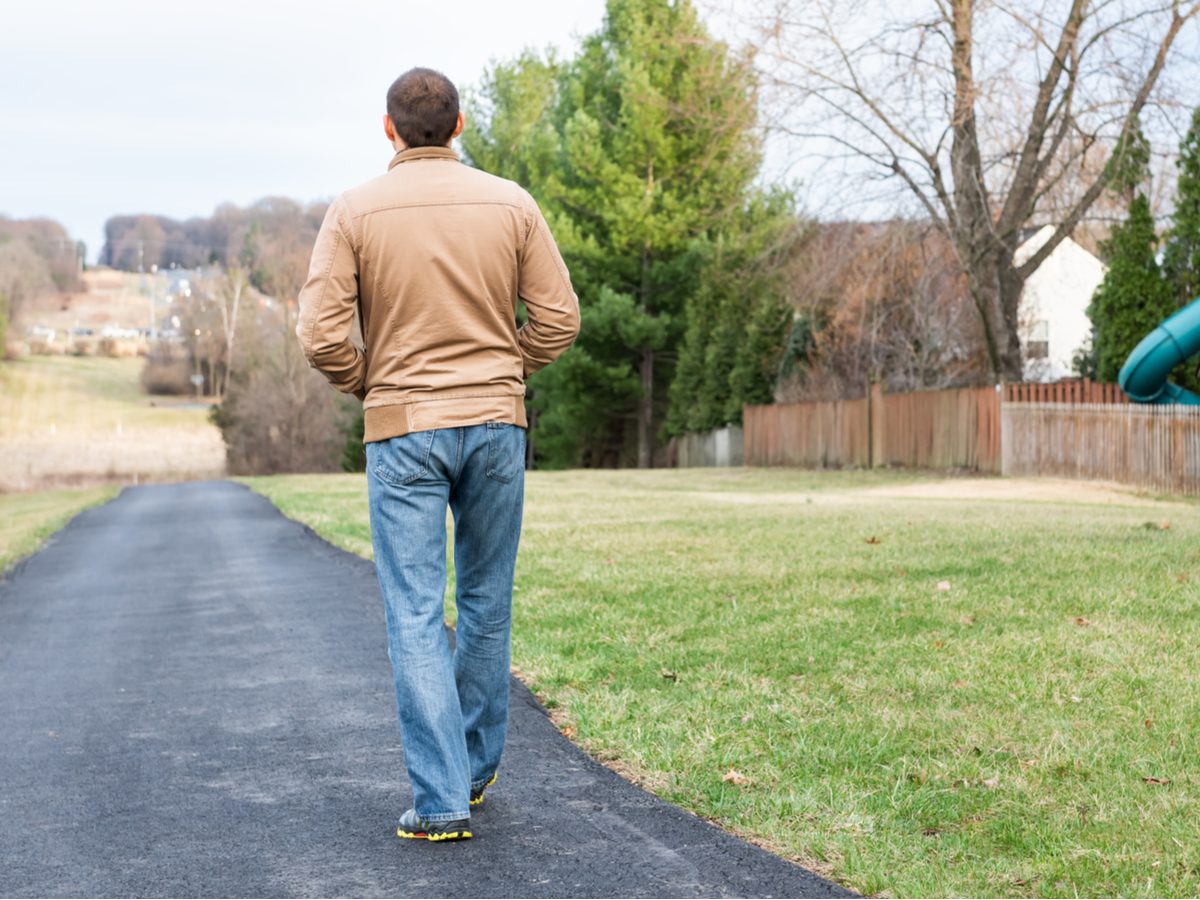
Ask An Expert: How Can I Stay Safe Outside During COVID-19?
Reader’s Digest Canada: We know the virus is airborne to some extent, but how easily can infection spread that way? Is it okay to take a walk around my neighbourhood? Or even just sit on my porch?
Germ expert Jason Tetro: This virus spreads primarily through droplets, which are relatively large amounts of fluid that are expelled from your mouth when you cough or sneeze. But also, when you’re coughing, sneezing or breathing hard like when you’re working out, you expel aerosolized droplets, which are smaller.
The majority of the risk is being infected from the larger droplets, which occur within just over half a metre of an infected person. From that distance to two metres there is still some risk but not as much. Beyond two metres, the risk goes down significantly because everything but the smaller aerosolized droplets will have fallen. Those smaller droplets are not as much of an issue because the amount of virus in them is so low that you would have to be constantly exposed to them to be infected.
So as long as you’re appropriately distancing from other people, it’s safe to take a walk or sit in front of your house.
So exactly how much of the virus do I have to be exposed to in order to get sick?
What you’re talking about is called the minimal infective dose. While we don’t know exactly what it is for this virus, for other respiratory viruses it’s usually around 1,000 virions—the term for each individual particle of virus—accumulated over one or several exposures. If you happen to be immunocompromised, that number goes down significantly.
Most of the time, the aerosols that are let off when you exercise would have about a dozen virions in them, or fewer.
So if I live in a building, I don’t need to be worried about it travelling through vents then, right?
The only time that would be a concern is if there’s a person who is on some kind of mechanical ventilator and it’s continually letting off aerosols into the HVAC system of the building. The odds of that happening in a residential building are very low, and even if it was happening, there’s also a very low chance the aerosols generated would lead to an infection of a person in another apartment.
We’ve covered walks, but what if I’m going for a jog and I hear a runner in front of me cough?
Run in the other direction. When people exercise, they’re increasing their breath, and expelling more volume. When you exercise, you produce more mucus—so even just breathing will produce more droplets. If you cough, the amount is going to be really high.
Also, if you’re running, the increased distance you’re covering means you should be a good five metres away from another jogger in order to be absolutely sure you don’t run into their cough.
Even if you’re walking, or just standing on the sidewalk, if a person walking by looks like they’re coughing, the best thing to do is turn your face away and walk in the other direction.
I’ve sometimes held my breath when passing people. Does that help?
Yes, that’s a good idea. If you close your mouth and you’re not breathing, nothing’s getting in there. If the virus gets on you, it would get trapped inside your sweat droplets or get caught up in the hairs inside your nose, which will prevent it from infecting you. Of course, the best thing is to have some kind of barrier—a scarf, a neck tube or a face mask.
Next, we ask: is it safe to have food delivered to my home during COVID-19?
Jason Tetro is host of the Super Awesome Science Show podcast, and author of The Germ Files.
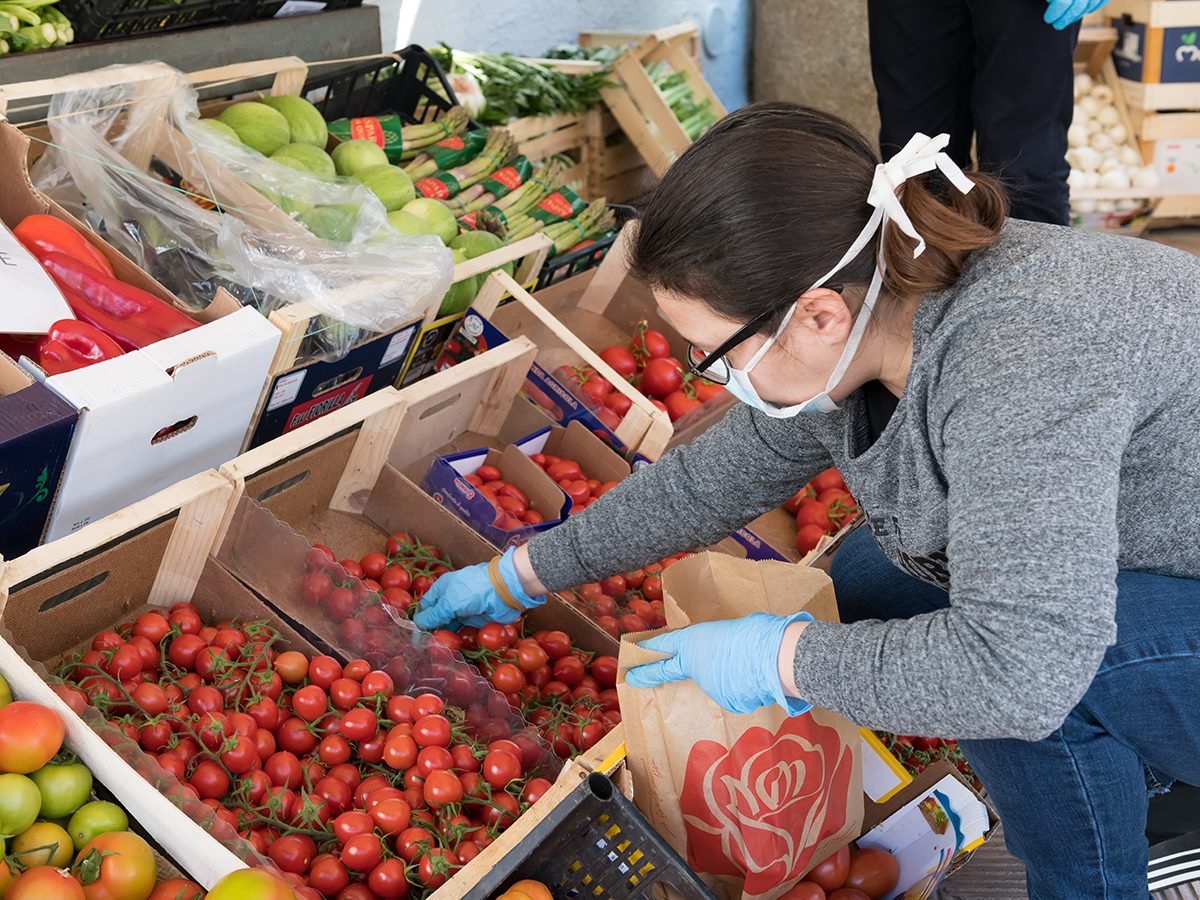
Ask An Expert: Should I Be Disinfecting My Groceries During COVID-19?
Reader’s Digest Canada: I wear a DIY face mask when I’m shopping, but what about when I get home? What should I do with my groceries—and the bags—to make sure they’re safe?
Germ expert Jason Tetro: As far as the bags go, if you’re using cloth bags, there’s nothing to worry about because the virus will get stuck inside them. Just let them sit for a few days after you use them. If you’ve brought groceries home in plastic bags, open those up just as you would remove protective gloves from your hands—peeling so they’re turned inside out.
The food packages inside the bags likely won’t have been contaminated, but if they were, the virus would be absorbed into the cardboard. If it’s plastic packaging, you can always have a soapy cloth on hand to wipe it down and that’ll take care of any viruses that happen to be on the surface. And that goes for any object and any kind of packaging. The coronavirus is an envelope virus, which means that it has a coating of fat around it—we call it a lipid—which is just like the grease you’d see on a plate. With a little bit of soap and water, and some friction, it goes away. You can go beyond that and use alcohol or bleach in water, but soap works fine.
I’d read about a study showing that the virus can survive on cardboard for 24 hours, but you seem to be saying something different.
The thing most news reports didn’t tell you is that in that study they had to scrub very hard to find even small traces of the virus in the cardboard.
Ah, okay. I imagine deliveries arriving in cardboard boxes, or envelopes in the mail, are in the same boat?
Yes. And also, realize that you’re going to be washing your hands after you touch any of those things, right? And you can be very focussed on not touching your face after you touch any of these things. Of course, if you are very worried, you can always let non-perishable items sit for three days, and then you’ll know for sure there’s no virus on it.
Next, we ask: can you catch coronavirus from your clothes?
Jason Tetro is host of the Super Awesome Science Show podcast, and author of The Germ Files.
In 2016, I was part of a group that sponsored a family of Syrian refugees. Marwa Ataya and her husband, Salem Ajaj (above), had fled their home country with three young kids in tow. They eventually settled in our hometown of Victoria.
That year, we drove them to doctor’s appointments and helped them find housing, furnish their home and enroll their children in school. We watched proudly as they flourished: their eldest kids started school, and Marwa and her husband opened a grocery store. Over the next few years, we developed a friendship, getting together to celebrate our kids’ birthdays and stopping to chat whenever we shopped at their store.
In March 2020, my family and I travelled to Mexico. When we left Canada, North Americans still weren’t incredibly worried about COVID-19. But the situation changed quickly. We were still abroad when the Canadian Government’s recommendation against travel was released. Upon returning to Victoria, we decided to self-isolate, just to be safe. That meant not leaving the house for 14 days—not even to stock up on groceries.
Partway through our self-quarantine I got a text from Marwa saying she was standing outside our house.
I opened the door to seven big bags of groceries sitting on our porch. Marwa was standing on the sidewalk a safe distance away. She’d brought my family a bunch of staples—meat, sugar, cheese, a big bag of flour—as well middle eastern food like moussaka and some candy for my kid.
I was so moved. I knew she and her husband were working, running a business and taking care of three small kids at home. That they took the time to care for us was incredibly kind. I would have liked to give her a hug, but of course I couldn’t.
Later, I learned she’d also dropped off groceries for my parents. Given that they’re in their 80s, this was a huge relief. I had been feeling bad that I wasn’t able to do some shopping for them while we isolated. I insisted several times over text that I wanted to pay Marwa back. She wouldn’t have any of it. She just sent me a bunch of shrugging emojis.
I have both fears and hopes about how our world will be changed by COVID-19. I worry that we’ll see an increase in xenophobia, and the tightening of our borders.
But it might also serve as a reminder of how important global connections are. I hope that people will remember how much refugees do for the communities in which they resettle. Canada is a kinder and richer country because of the contributions of newcomers. When this pandemic ends there will be a list of refugees hoping to come to Canada. I hope Canadians will step up and help those people get to safety.
For the time being, I’m bolstered by the support I’ve witnessed in my own community. I’ve seen people online asking for deliveries of essential items like diapers, and watched as others rushed to volunteer to make the drop-offs. The silver lining has been seeing this kind of help and mutual aid.
Have you been touched by an act of kindness during the lockdown? Show your gratitude by nominating someone for a Reader’s Digest Kindness Award.
Coronavirus cases continue to grow—at last count, more than 2.6 million cases around the globe, with more than 180,000 deaths, according to data from Johns Hopkins University. There’s also another noteworthy (though smaller) subset of people: Those who have had COVID-19 and recovered.
The availability of a COVID-19 vaccine for the general public still seems far away. One hope is that the population could at some point develop herd immunity. The concept is that if enough people become infected with the virus, and recover, the population might be more resistant to it because there are fewer people to spread the virus. This could act as indirect protection for individuals who are not immune to the disease (or who can’t get the vaccine, when and if one becomes available).
But, with COVID-19, this is more complicated. The World Health Organization (WHO) confirms they are investigating COVID-19 patients who seemed to retest as positive in South Korea. This raises a critical question. Did these people catch the virus again, or were they unable to fully fight off the first infection? All the U.S. Centers for Disease Control and Prevention (CDC) will say at this point is that the answer isn’t clear.
We spoke with several health experts to understand the relationship between COVID-19, reinfection, and immunity.
Coronavirus and immunity
“My expectation—in line with Dr. Anthony Fauci, who is a good person to be aligned with scientifically—is that immunity to coronavirus would function as it would for any other organism,” says Philip Bretsky, MD, a board-certified internist and primary care doctor, with a background in epidemiology, at Santa Monica Primary Care.
Dr. Bretsky explains that among China’s more than 81,000 reported cases of COVID-19, roughly 100 patients later tested positive for the virus a second time: That’s about 0.1 per cent of the total cases. In South Korea, 0.9 per cent of the country’s total cases may have been re-infected, or at least tested positive again after appearing to recover. At least at this moment—based on those numbers—a COVID-19 infection theoretically may lead to immunity 99 per cent of the time.
“There exists a number of other potential explanations for these repeat infections, but I would think that reinfection events, while possible, would be the exception rather than the rule,” says Dr. Bretsky.
Given the limited data, other experts are even more hesitant to make predictions. Georgine Nanos, MD, a board-certified family physician specializing in epidemiology and chief executive officer of the Kind Health Group, a company offering aesthetic care in Encinitas, California, thinks it’s impossible to say what’s going on. “We really don’t have enough information yet to give an informed scientific opinion. I don’t want to speculate.”
Throughout North America, the testing shortage has led to a lack of data; that’s one of the reasons it’s difficult to gauge coronavirus immunity, according to Dr. Nanos. “We’ve been behind from the start and are falling further and further behind as more people get infected and the virus spreads.” Without widespread testing to look at antibody development and resistance, it’s grasping in the dark.
The two types of antibodies that blood tests detect can give doctors differing clues about the patient’s infection status, says Purvi Parikh, MD, an infectious disease, allergy, and immunology specialist and clinical assistant professor at NYU Langone Health in New York, and board member of advocacy group Physicians for Patient Protection. “IgM antibodies tell us if someone has had a new or recent infection whereas IgG antibodies tell us about a past infection. IgG is helpful in assessing immunity as well.”
Antibody tests are not meant to diagnose a condition alone, since the body may not have had time to create antibodies soon after an infection. A better test for a current infection is a nasal swab (rather than a blood test), which picks up the genetic material from the virus itself and is detected with a technique called PCR, or polymerase chain reaction. (But antibody tests are necessary because a PCR test won’t tell you if you’ve been infected in the past.)
However, the World Health Organization says that even if someone tests positive for coronavirus antibodies in their blood, it’s not clear that they have immunity. “There’s been an expectation, maybe, that herd immunity may have been achieved and that the majority of people in society may already have developed antibodies. I think the general evidence is pointing against that… so it may not solve the problem the governments are trying to solve,” the WHO’s Michael Ryan, MD, executive director for health emergencies, told CNN on April 18.
Faulty tests may be to blame for people who retest positive
Possible explanations for apparent reinfection in countries like China and South Korea may be due to false negatives, where the infection was low and undetectable during testing, or false positives, according to a report in the British Medical Journal. Both WHO and South Korea are currently investigating supposed cases of reinfection.
Emily Gurley, MPH, PhD, an epidemiologist at Johns Hopkins University notes that reinfection has been reported in the media, but not in scientific studies. “There have been some reports which suggested that reinfection might have occurred for some patients, but this would be very unlikely and there are simpler explanations for what happened,” Gurley says.
“It’s much more likely the reports are simply the result of tests working imperfectly—either someone was assumed to have COVID-19 without a lab test and then later had an illness that actually was lab-confirmed to be COVID-19, or that the patient tested negative and then later tested positive just because the test sometimes gives false results,” she explains. “We know that there are issues with the tests, so this is the best explanation for what has been reported.”
During a press conference in Geneva on April 13, the WHO’s Dr. Ryan, said that like MERS-CoV (the coronavirus that caused the MERS outbreak in 2012), someone who contracts COVID-19 and develops detectable antibodies should have immunity for a period of time. However, as Dr. Ryan points out, it’s unclear what that duration of time is.
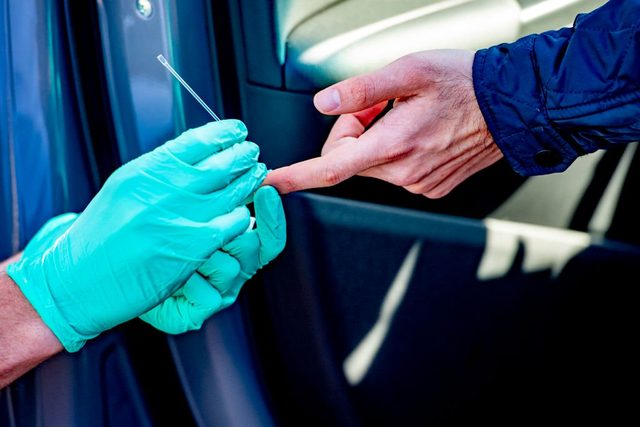
Virus mutation does not appear to be a cause for concern
While it’s possible that a person could be infected with a different strain of a virus, health experts don’t think that’s the case with COVID-19. Yes, the virus is mutating, but it doesn’t seem to be a cause for concern. “All viruses mutate,” says Dr. Bretsky, explaining that RNA viruses like COVID-19 mutate more rapidly than DNA viruses. “They lack the ‘proofreading’ enzymes present in DNA viruses. However, to our great relief, COVID-19 mutates quite slowly—at about half the rate of seasonal flu. This has positive implications both for the development of a vaccine as well as for an expected lengthy response of immunity after recovery from infection.”
The slow mutation rate of COVID-19 bodes well, with the new sequences similar to the original virus, which means that once the immune system recognizes the virus and has made antibodies against it, those same antibodies should protect you if you encounter the virus—or similar strains of the virus—in the future.
In fact, there are probably already different strains of the virus. Two new sets of data, one in April 2020 uploaded to medRxic, and the other from the NYU Grossman School of Medicine, separately but similarly, suggests there may be separate strains of COVID-19. The studies concluded that coronavirus in New York came to the area in mid-February. This is weeks before the first case was confirmed, and it seems like it was brought mostly from Europe, instead of Asia.
These strains are closely related. “There are multiple ‘strains’ of coronavirus, but each of these is fundamentally very similar to one another,” says Dr. Bretsky. He notes that, while the COVID-19 genome has 30,000 base pairs of genetic material, “even the most divergent strains only differ by 10s of base pairs.”
Knowing the different strains might be helpful in figuring out where they originated (say Europe versus Asia). However, “it is unlikely that these differences would impact disease severity,” Dr. Bretsky says. “Instead, the differences in disease severity and mortality rate are more likely related to host characteristics such as age and underlying chronic conditions.” (These are the people at higher risk for COVID-19.)
Of course, because there is such limited data, it’s impossible to completely discount the notion that some strains might be worse than others. “We are learning about this virus as we treat it, but yes it is possible that some strains may be deadlier than others,” says Dr. Parikh.
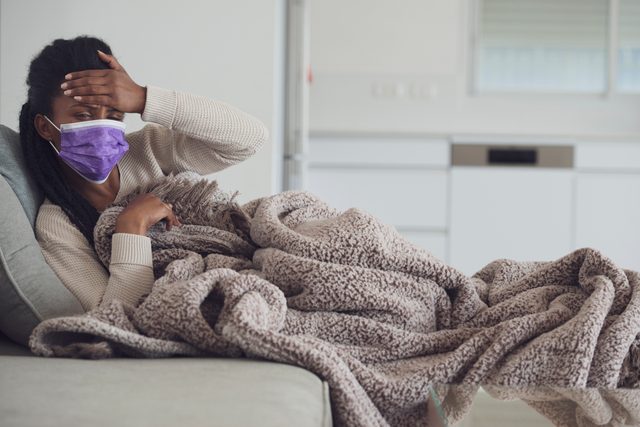
Some viruses can ‘hide’ in the body and then reactivate
One possible explanation for what appears to be a reinfection is that the body never truly conquered the virus, even though levels were low enough for a negative test result. Some viruses can cause a latent infection, and can lie hidden or dormant in a person’s DNA. They cause no symptoms until they are reactivated. For example, herpes simplex 1 can cause repeat outbreaks of cold sores throughout a person’s lifetime, and the chickenpox virus can be reactivated later in life and cause shingles. (Here are the symptoms of shingles you might be ignoring.)
However, coronaviruses are not thought to have the ability to cause latent infections or remain dormant in a person’s DNA.
“I think it is accurate to say that there is not yet evidence for latent infection with COVID-19 although there are mounting concerns about such,” says Dr. Bretsky. “To be truly latent, an infection not only has to persist in the host cells but then later has to be able to reactive to full viral gene expression and reproduce.”
Very few types of viruses have this ability, including HIV and herpes viruses, he says.
During the WHO press conference, Dr. Ryan addressed the issue: “On the issue of reactivation and latent infection, there are many situations, particularly in viral infection where someone doesn’t clear the virus entirely from their system.”
Other factors could cause a resurgence of symptoms that are not considered a true latent infection. “It can happen in the case of immunocompromised people who are sick for other reasons, and then the virus can come back and attack the person again, and that’s sort of seen as reactivation. It’s usually that the virus was never property cleared,” Dr. Ryan explained.
The truth is that it’s too early to say if people infected with COVID-19 go on to develop persistent, protective immunity, and if so, how long that immunity lasts. Currently, health agencies and experts worldwide are working with just five months of limited data on COVID-19, so until there is more testing of patients to determine if a virus has been truly cleared from the body, it’s unclear why some people had a resurgence of symptoms after appearing to recover.
Next, find out how coronavirus is different from all pandemics through history.
I happily devoted more than 40,000 hours of my life—that’s 70 hours a week over the course of my 11-year tenure—to my employer, a catering business in Tempe, Arizona. After attending Le Cordon Bleu Institute of Culinary Arts in Pittsburgh, I’d worked at various bakeries, bars, restaurants, and country clubs before landing the position. Once there, I diligently climbed the ladder from pastry chef to sous chef to executive chef. Aside from absolutely loving my time in the kitchen and the leadership responsibilities of mentoring my hand-picked team, I’d also injected myself into the operational and sales sides of the business. I would have contentedly stayed there forever.
On March 11, a full week before Arizona Governor Doug Ducey had even ordered the closure of all bars and restaurants statewide, I was laid off. You see, the catering industry was hit first because so many events were being cancelled due to size restrictions on gatherings. Plus, we were already coming off a slow season. As one of the top-paid people in the company, I was the first to be let go.
For the next couple of days, I was kind of in a trance. I had worked 70-plus hours a week for so long, that I didn’t really understand how to pivot forward. My career and purpose had just been pulled out from under me. Then, two weeks later, my husband lost his job, too.
So we did what most people would do: reviewed our finances, researched what to cut out of your budget during a pandemic, started to cut spending everywhere we could, and then began to look for new income streams in an effort to sustain ourselves. Here’s how those efforts paid off.
Rented out a spare bedroom
Income: $650/month
My husband and I have a three-bedroom home and quickly realized we don’t need all that space to ourselves. It just so happened that one of my former co-workers, a pastry chef with whom I have a great relationship, was looking for more affordable rent so that she and her boyfriend could save up to purchase a home. They moved in and it’s been such a blessing for all of us—extra income for us and an easy way for them to save for their future.
Cancelled streaming services
Savings: $67.98/month
Next, we cancelled our subscriptions to Netflix ($12.99) and Hulu + Live TV ($54.99). Honestly, we could have taken this step a long time ago—we weren’t even using the services because we worked so many hours. I’ve never been a person who came home and turned the TV on anyway, so we don’t even miss it.
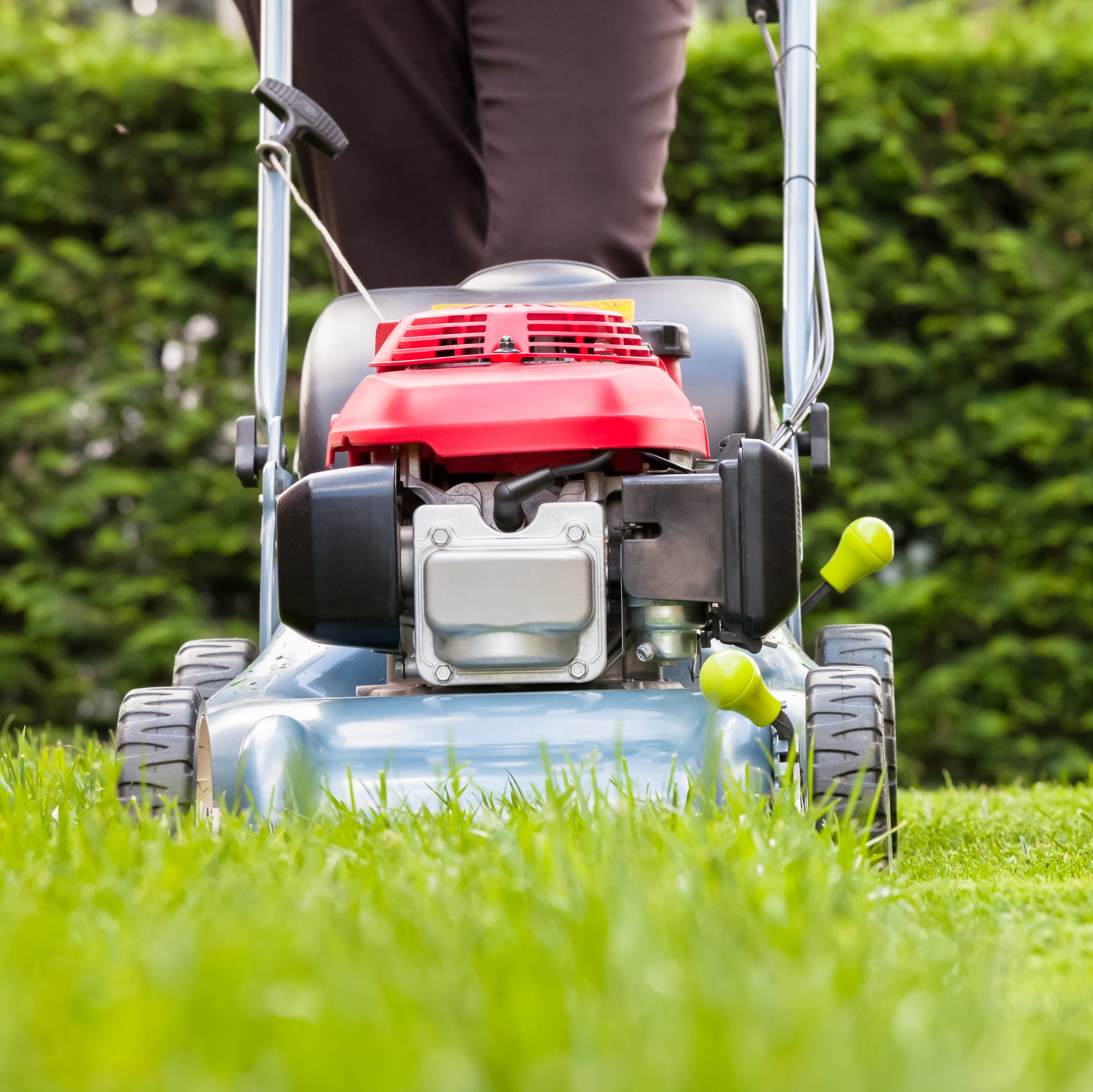
Cancelled landscaper
Savings: $80/month
We decided it was no longer necessary to outsource our biweekly lawn maintenance, so we let our landscaper go. My husband traded some tools that were laying around the garage for a lawnmower and took over those duties. We realized that before the coronavirus, we were living in a world where we had to have these things because of our busy lives. But once our world changed, it became clear that we really didn’t need to spend money on help. We’re capable of doing this ourselves, so why were we paying someone to do it for us? However, we’ll still hire our landscaper for bigger projects, like trimming the trees.
Cancelled pool and home cleaning services
Savings: $215/month
For the same reasons, we decided to cancel our pool service as well ($95/month). Our neighbour just so happens to service pools, so he offered to show us to how do the maintenance ourselves. As a thank you for his tutorial, I’m helping him set up QuickBooks for his business to automate his invoices. We also cancelled our house cleaning service ($120), which we’d relied on once a month to do the big stuff we never had time for, such as the baseboards, windows, fans, and grout lines.
Consolidated credit cards
Savings: undisclosed
Before my husband got laid off, we decided to apply for a new credit card and transfer all of our credit card debt onto that one card—a zero-interest balance transfer credit card for 21 months. While it was nothing insane or unmanageable, we did this just in case we got to a point where we couldn’t make a payment our cards in full each month, so we wouldn’t get hit with interest charges. Basically, it’s a safety net move for us if we get to a point where we need to park some debt somewhere until things get going again. Plus, it will free up some cash flow to help invest in my new business without having to draw from our savings. We work hard to maintain great credit and we intend to keep it that way.
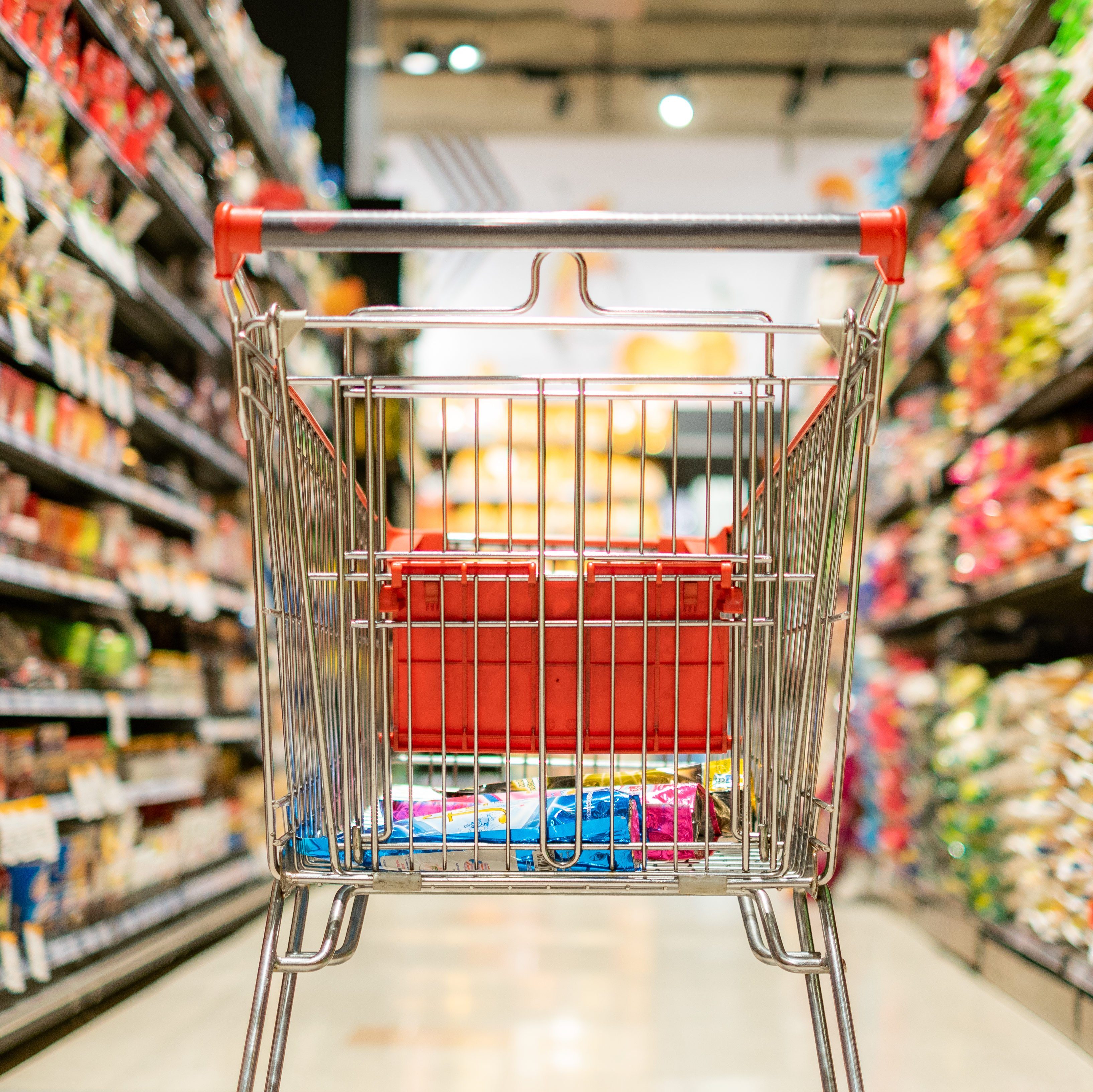
Changed grocery stores
Savings: varies
Between the incredibly long lines to even get into Costco and the fact that we couldn’t even find the food we wanted because panicked customers were hoarding products, our grocery shopping routine needed to change. We’d driven by WinCo Foods numerous times and I’d always meant to check it out, so we decided to give it a shot. I’m so glad we did because they are so much less expensive than even the big box stores. They still have the same meat I would buy at Fry’s or Safeway, but it was so much cheaper. We really like their bulk grains section. Also, there’s no membership required.
Started cooking more
Savings: varies
While we obviously want to support our favourite local restaurants, we’ve really cut back on ordering takeout food. We’ve started cooking dinner with our new roommates. And we plan accordingly, which helps save money—for instance, we’ll say tonight we’re going to have spaghetti and meatballs and then tomorrow we’ll turn the meatballs into sandwiches. If you’re looking for recipes, this Italian grandma is hosting a virtual class to teach you how to make pasta.
Relied on DIY home repairs
Savings: varies
Our dishwasher recently broke, and instead of calling a repair person I watched some YouTube videos to figure out the problem myself. After working in kitchens for so long, you just become knowledgeable about plumbing and electrical issues. You also become less intimidated about trying to fix things yourself.
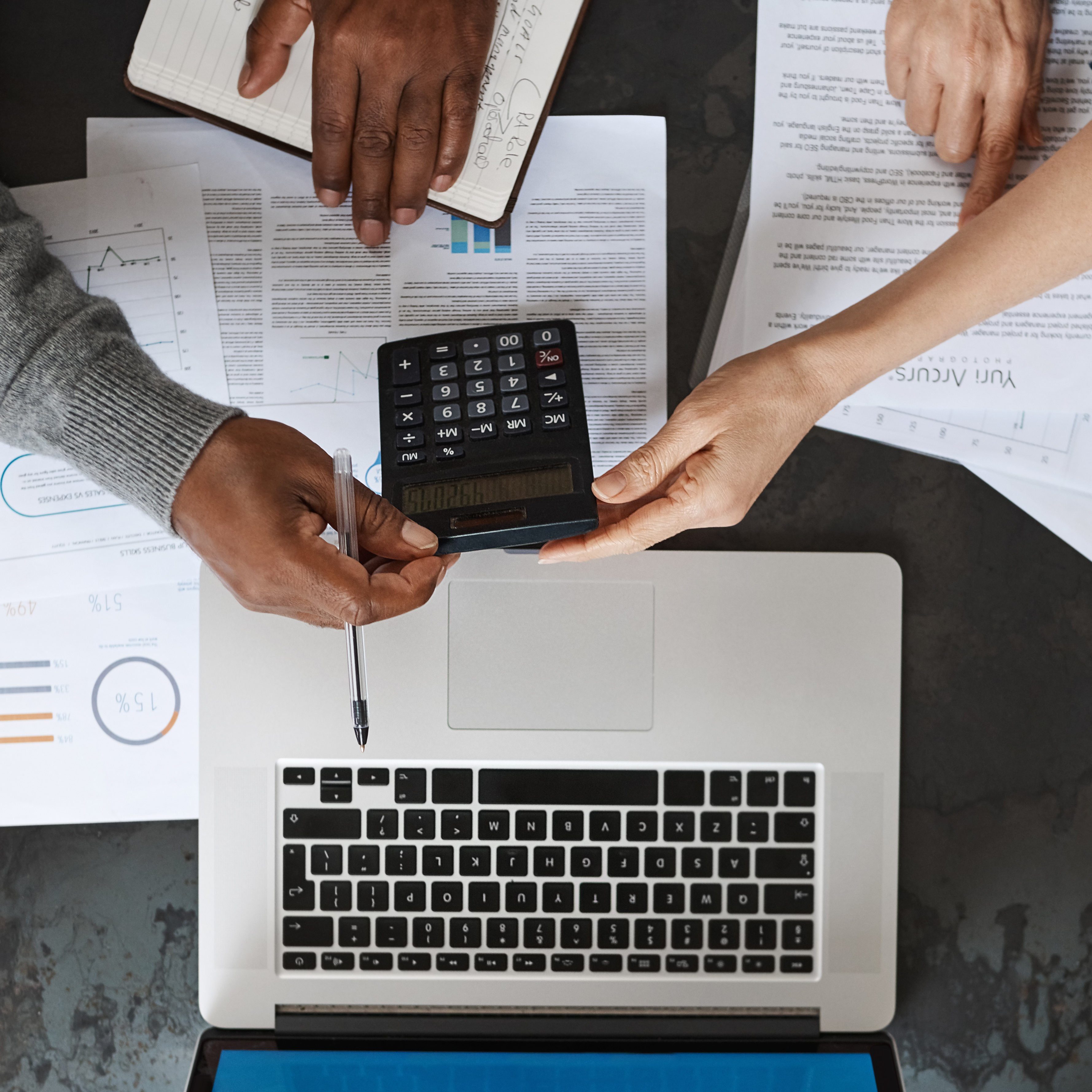
Secured other financial aid
Income/savings: varies
I filed for unemployment when I was laid off and my husband will be doing the same as soon as his one-month-long severance package ends. We’ve also dipped into our savings account to make ends meet, and will be researching the steps to make a withdrawal from our 401(k) if needed. Thankfully, my husband’s student loans were automatically deferred, so that’s a $350 per month savings right now. Finally, our $1,200 stimulus checks are also a big help.
Launched a consulting business
Income: TBD
Yes, COVID-19 came in and shocked us, but it’s also brought me an unexpected silver lining. For years, in my limited free time, I had been working on launching a restaurant consulting business called Taking the Wheel Consulting—but ultimately, I was too scared to leave my job. I had been with the same company for so long that mustering up the courage to find success on my own felt impossible. I knew I would eventually have to dive into unfamiliar territory by ripping the band-aid off—and being laid off made me do just that.
Above anything else, my beloved food and beverage industry was now suffering badly, and I needed to concentrate on supporting the people first—the food service industry is deemed “essential” for a reason. My friends have lost their jobs and many businesses have closed its doors without knowing if they will ever re-open. This reality pushed me to finally take the initiative by diving into my business the way I should have months before.
Harnessing all my years of industry experience, I recently hosted a free Facebook Live workshop called “From Crisis to Cash Flow” for restaurant, bar, catering, and hospitality owners and managers to provide tips to help weather this storm. Additionally, I’m currently prepping an upcoming ten-part series that will help them prepare for reopening once the restrictions have been lifted.
Amazingly, even during all this chaos, I’m now living in a place of peace. I feel great, I’m waking up excited each day and looking forward to the future. We were so caught up in all the distractions of our pre-pandemic world, that losing my job actually forced me to step up and become the person I was meant to be for those whom I’m meant to serve. I discovered an opportunity to help our industry on a global level and I have been blessed with now having a platform to do so. I’m grateful for that.
